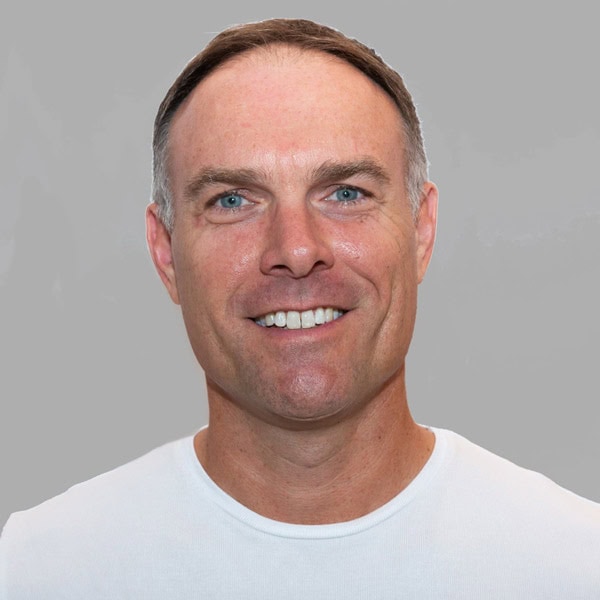

Four years ago Dr Steven Lyng, the Assistant Headmaster of Windermere Preparatory School, a private school located in the town of Windermere, Florida, asked me this profound question:
Steve is a visionary curriculum creator impassioned on ensuring education changes to meet the needs of a 21st century planet and I am a career long visionary entrepreneur impassioned to help him do it.
Ken Robinson, who is one of the great authors, speakers, and leaders in the space of bringing change to education, maintains that “education kills creativity”. With Ken’s thinking in mind I have a thought to share about Entrepreneurs – Entrepreneurs are NOT a small minority group of highly creative people that have unique skills foreign to most. Instead, entrepreneurs are people that have been uniquely capable of recognizing their ability to be creative at an early age and uniquely confident and passionate enough to sustain years of not allowing the education system to take that creativity away from them. In short – they survived education without being changed while the rest of their school mates suffered the fate of most and had their creative fire stomped out or perhaps never had the chance to start their fire in the first place.
Lets face it. A lot of people live their lives just getting by, and getting on with it. They do not love what they do for a living and they do not identify what they do with who they are. But then we have this much smaller group of people that when you speak to them about what they do you had better get ready for a very long conversation filled with passion and happiness. These people could not imagine their lives doing anything else.
Again, people like Ken Robinson have talked about this at length and there is no shortage of innovators trying to solve the “Whys” and “Hows” on this imbalance. But there is no denying that almost all students dislike school, and that school is an archaic system built on a completely unqualified timeline with total concentration on a few minor cognitive/academic subjects all which were invented to serve the needs of a First Industrial Revolution that began some 200 years ago and that is not positioned to serve the needs of society in the Fourth Industrial Revolution happening today.
Let us assume that all of you reading this feel good about the fact that change must happen and lets also assume that you agree that “creativity” might just be the one core competency all graduating students will need if they are going to have a chance at building their own independent economies then we all agree that economic independence and our children’s ability to create it is essential and that in the current system most of our children are not getting the skills they need to accomplish it.
By the way – at the rate by which autonomous systems are evolving and, by the rate by which corporations are demanding what is being dubbed “intrapreneurship” from their employees (whose jobs BTW are disappearing at an alarmingly fast rate as corporations work to ensure efficient, sustainable and highest possible profitability) then I think it is fair to assume that economic independence and our children’s ability to create it is absolutely essential. Yet almost all of your children are sitting in an almost identical educational system everyone of you reading this sat in when you were their age. Now just think about how much the world has changed in that same time frame. Problem?
It has been five years since Dr. Lyng first proposed his question to me and today Entrepreneurial Studies is a fast growing, high demand program at Windermere Preparatory School. Classes are full to the brim and we have inspired an entire community of businesses people and corporate leaders to open their doors to our amazing students. We have a robust group of highly accomplished entrepreneurs and business people that are part of our Advisory Council where they work along side of the school to ensure the students get all the right access into an exponentially growing network of businesses and mentorship. Students are using entrepreneurship to build their own startup companies where we place failure right at the center of our mission. Fail and learn, then try again and fail some more. Students go out of the classroom into real companies and help CEO’s and business owners solve their real problems or help them find new opportunities. Real, real and more real. That is the mission.
When Steve and I began our work to build this program one thing was abundantly clear to both of us – I had to be in the classroom. I was not a teacher and I had no experience being a teacher. All I had was 25 years of being an entrepreneur and I had an absolute passion towards creating solutions that would give young people access to that world. Today I facilitate the classes for 3 hours in the morning after which time I leave campus and attend to my own real world of entrepreneurship so as to keep building on my own dreams.
But why was it so important for me to be in the classroom? Simple. All entrepreneurs know that the only way to real success is to spend as much time as you possibly can with your customers so that is exactly what I did. I observed, I listened, I taught and with every outcome we either pivoted away from the things that did not work all that well and expanded on the things that did. While we continue to do that everyday we are certainly getting closer to producing the type of outcomes that have given students that very thing we set out to produce some five years ago – Creativity. But just so we are all clear. I do not claim to teach students to be creative or entrepreneurial. It turns out that they already are. Our program just helps them find it again and encourage it as much as possible.
What is interesting to me now is how the world is approaching this behemoth problem of fixing education. There was a time earlier in my work with Steve where we both would have agreed that the only real solution was to build new schools with new curriculums and ensure that all of it could be scaled. In fact, there are examples all over the world today of organizations, governments and private institutions all embarking on scaling new systems. But after four years of being with students everyday I no longer feel that scaling is the solution. For the record, I applaud all these innovators for launching all these new systems and for diving in and bringing real solutions to students. But you see, after my years in the classroom I have found that education at its core is about one very simple thing. Relationship. It is the relationship between a teacher and a learner.
If we are going to change education then we must begin at the bottom and not at the top. Building new systems and scaling them may actually just be starting a whole new problem. Yes a new system of education may yield positive outcomes for today’s students but the fact that the system is built to scale by default means that just like the massive failing public education systems we see all around the world today it risks being obsolete at some point in the unpredictable future.
If you are going to fix education you fix it with leaders like Dr Steven Lyng. Our success can be pointed to the fact that Dr Lyng and I recognized the problem as more than just an education one. Instead we recognized it as an asset management problem. It was not that Steve was managing a poorly run school filled with lacking resources and unqualified teachers. On the contrary. Windermere Preparatory School is among one of the finest K -12 schools in Florida if not the world and is packed with amazing and passionate teachers and educational leaders. It is also owned by one of the world’s largest leaders in private school ownership, namely Nord Anglia Education.
So what was our approach? Very early in our work we realized that if we were going to be successful and knowing we already accepted that change would be difficult we found that by combining Steve’s skills in curriculum building and my skills in business asset management handling that when merged with visionary methodology we knew the potential for real success would mean acknowledging three essential facts.
Schools can change. That is not the problem. The problem is that most school leaders simply do not know how to go about effectuating real change. They see radicle change as overwhelming when they consider the size of the problem they are looking to tackle. It is far easier to just keep doing what they are doing. Especially if no one is complaining. Also, as long as colleges and universities keep shrouding the problem by making grades and SAT scores the metric by which our young students are merited so as to gain acceptance into their overly expensive and overly adorned institutions then how can high schools convince parents that there needs to be change? (More on that in another article)
For now, if we simply localize the problem we see that school leaders have so much to contend with every day in running their schools. They send teachers off to seminars to gain new skills they believe might help implement change. Those same teachers are not business people and while they are impassioned about making a difference and bringing about change for their students they do not have the skills to show school leaders how to effectively implement on the changes they just spent three days learning to implement.
So here is a radical idea. Lets not go and try scale new ways of doing education. Instead lets revolutionize the system we have. The resources are all there. School leaders need to reach out to trusted entrepreneurs and welcome them to join their mission. They say it takes a village and I say the village is more than prepared to dive in and help. If you want to change education you do it locally and you do it small and you do it so that the relationship between teachers and learners can thrive. That is what humans do. We are social creatures that work best together and we are only at our best when we do. We all want amazing futures for our children because we love them. We love them way too much to have them end up spending their weekdays just waiting on the weekends because they do not love what they do.
So to all of you incredible entrepreneurs out there – go and meet your school leaders. Be cautioned that they are very busy but stay persistent as you will also find that they are very passionate and care a great deal about your children. Ask them if they can use your expertise to help bring about change. You might be surprised by what they say.
Yes. It might just be that the only way to ensure schools achieve sustainable change so as to kindle the fires of this Generation Z is landing in the hands of entrepreneurs. The very ones who survived the system and maintained their creativity against all odds may now be held responsible to fix that very thing they worked so hard to escape. Ironic? – No doubt.
But a word of caution to all of us that embark on this noble journey. Be careful not to assume your well crafted and innovative models of scalability apply here. Remember that education ultimately comes down to a relationship and works best at the most fundamental of levels. Its best outcomes are based in trust. There are amazing teachers and educational leaders ready to change the system – they just need a little help from people that thrive on spending their lives changing everything all of the time – Entrepreneurs.

Gary is a visionary entrepreneur and the founder and CEO of Learn to Start
LEARN TO START
connect with us
Get in touch and ask us a question about any aspect of Learn to Start.
This site is protected by reCAPTCHA. The Google Privacy Policy and Terms of Service apply.
© Startup Studio LLC | All rights reserved | Legal Policies